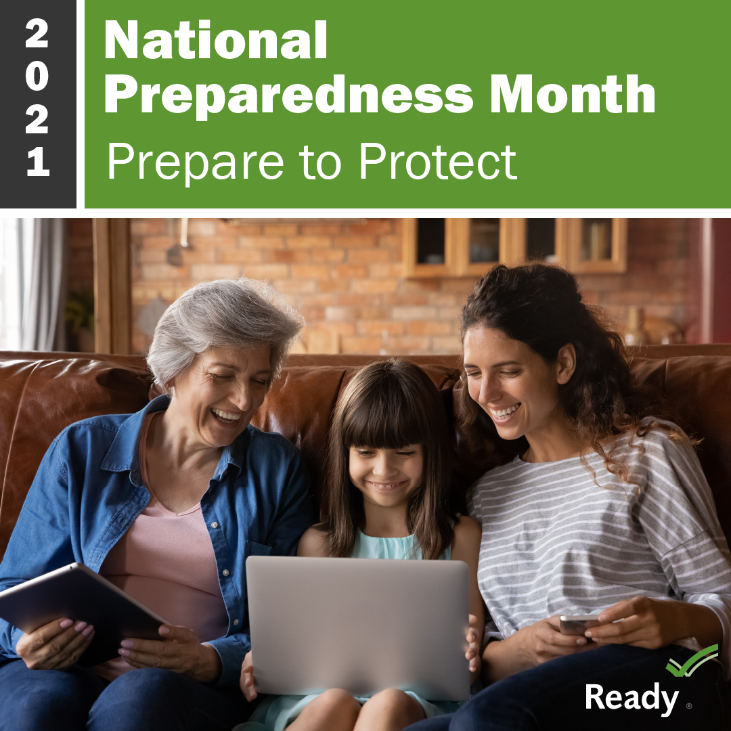Preparing for disasters is as easy as 1-2-3
- John Cornelison
- April 1, 2011
Table of Contents
April is Disaster Preparedness Month. VashonBePrepared, in conjunction with the King County Office of Emergency Management (OEM) urges citizens to take simple steps to prepare for earthquakes, floods, man-made disasters and other emergencies.
“We can’t stop disasters from happening, but we can prepare to survive them,” says OEM Director Hillman Mitchell. “Now is a perfect time to think about what you would do if a large disaster were to strike our region."
Disaster planning consists of three simple steps:
1. Make a Plan
Every family should have a plan for how they will communicate during an emergency and where they will meet if separated.
Establish an out-of-area contact. This should be someone out-of-state that each family member can contact to communicate their well-being.
Texting will often work, even if phone calls can’t go through.
If cell towers are down, landline calls may work.
Long-distance calls often go through when local calls don’t.
Establish a meeting place near your home where family members will go if it’s not safe to stay in your house or apartment.
2. Build a Kit
Having basic emergency supplies on hand will not only keep you alive, but more comfortable during the first few days of a disaster. A minimum three-day supply of the following items is recommended:
Ready-to-eat food
Water (1 gallon per day, per person)
Medications and personal hygiene items
You’ll also want to pack:
Radio (battery-powered or hand-crank style)
Extra batteries
Sturdy shoes and warm clothing
Blanket
Flashlight
Whistle
Dust mask
Putting these items together in one place will ensure you will have what you need, quickly. You should have emergency kits for your home, vehicle and work or school.
A complete emergency kit checklist can be downloaded at www.3days3ways.org or www.takewinterbystorm.org (translated in multiple languages).
3. Get involved
Resilient communities don’t just happen; they are built by individuals working together.
Get to know your neighbors. A trusted friend next door can keep an eye on your property, your kids and pets if an emergency keeps you from getting home.
Volunteer to serve on your local Community Emergency Response Team (CERT). CERT groups receive training and resources to help address immediate needs, until emergency personnel are able to respond.
Learn CPR and basic first aid – it can make the difference between life and death for someone close to you.
There are a number of additional ways citizens can prepare for emergencies that are free and require little effort:
Stay informed
Tune in to TV and radio stations during an emergency (if a power outage occurs, you’ll be glad you have a battery-powered radio and batteries on hand).
Register for emergency alerts
Most cities have an automated public alert system that can quickly notify residents to evacuate, stay in place, or take specific actions. Contact your local Office of Emergency Management to register. You can also register for regional emergency, transportation and general safety alerts at the Regional Public Information Network (RPIN) website, www.rpin.org.
Participate in the statewide earthquake drill on April 20 at 9:45 a.m.
The regular monthly test of the Emergency Alert System will include a statewide “Drop, Cover, and Hold” earthquake drill. By practicing what you should do when the ground begins to shake, you’ll develop an automatic response when a real disaster strikes.
Encourage your school or place of business to participate by tuning in to KIRO 710 AM radio. When the simulated earthquake is announced:
DROP… to the floor
Take COVER… under a desk or sturdy table
HOLD on… until the drill is over
Take advantage of free resources to help you prepare
A new earthquake guide is available to help businesses protect employees, assets and business continuity after a large scale earthquake. Visit King County Emergency Management's business preparedness web page for a downloadable copy or contact your local Office of Emergency Management.
Attend local Disaster Preparedness Fairs. Check with your local city to find out about upcoming opportunities to talk to local elected officials, emergency responders, and disaster preparedness experts.
For more information about emergency planning, visit the King County Office of Emergency Management web site at www.kingcounty.gov/prepare and VashonBePrepared’s website at www.VashonBePrepared.org.

 BOTHELL, Wash. - FEMA Region 10 welcomed its new Regional Administrator, Willie G. Nunn, following his appointment by President Joe Biden. Mr. Nunn was sworn in by FEMA Administrator Deanne Criswell at the regional office this morning.
BOTHELL, Wash. - FEMA Region 10 welcomed its new Regional Administrator, Willie G. Nunn, following his appointment by President Joe Biden. Mr. Nunn was sworn in by FEMA Administrator Deanne Criswell at the regional office this morning.